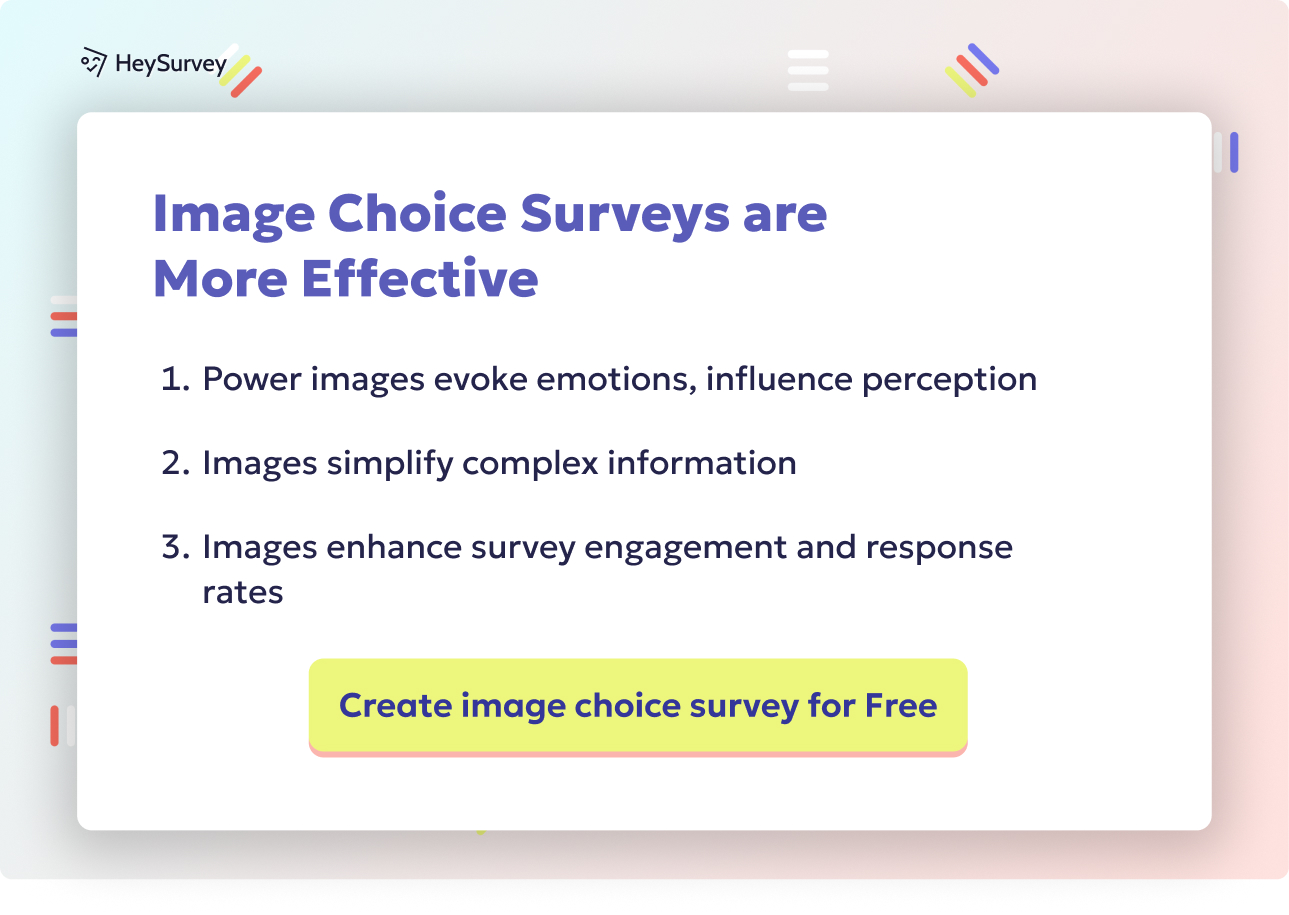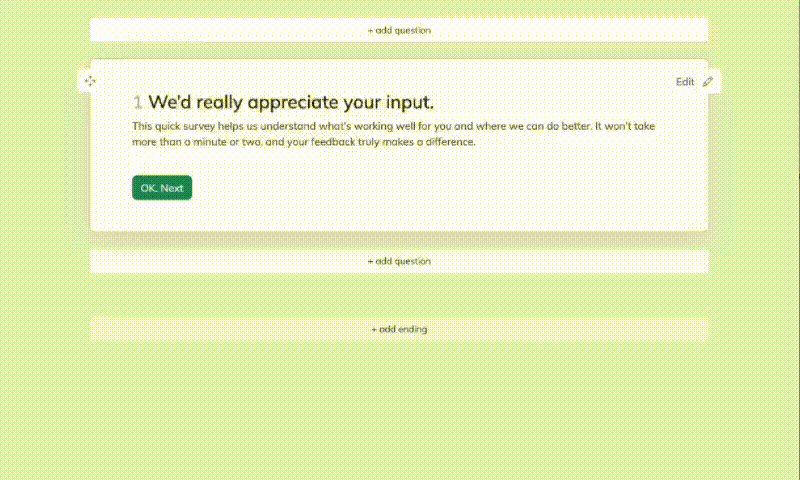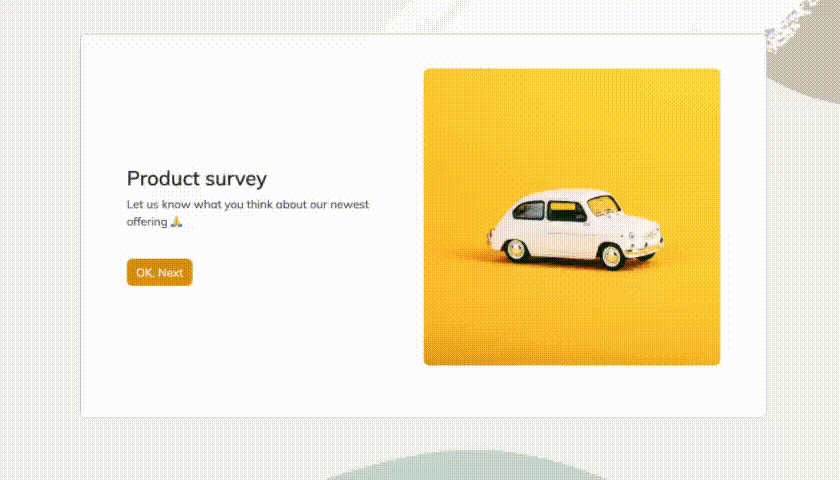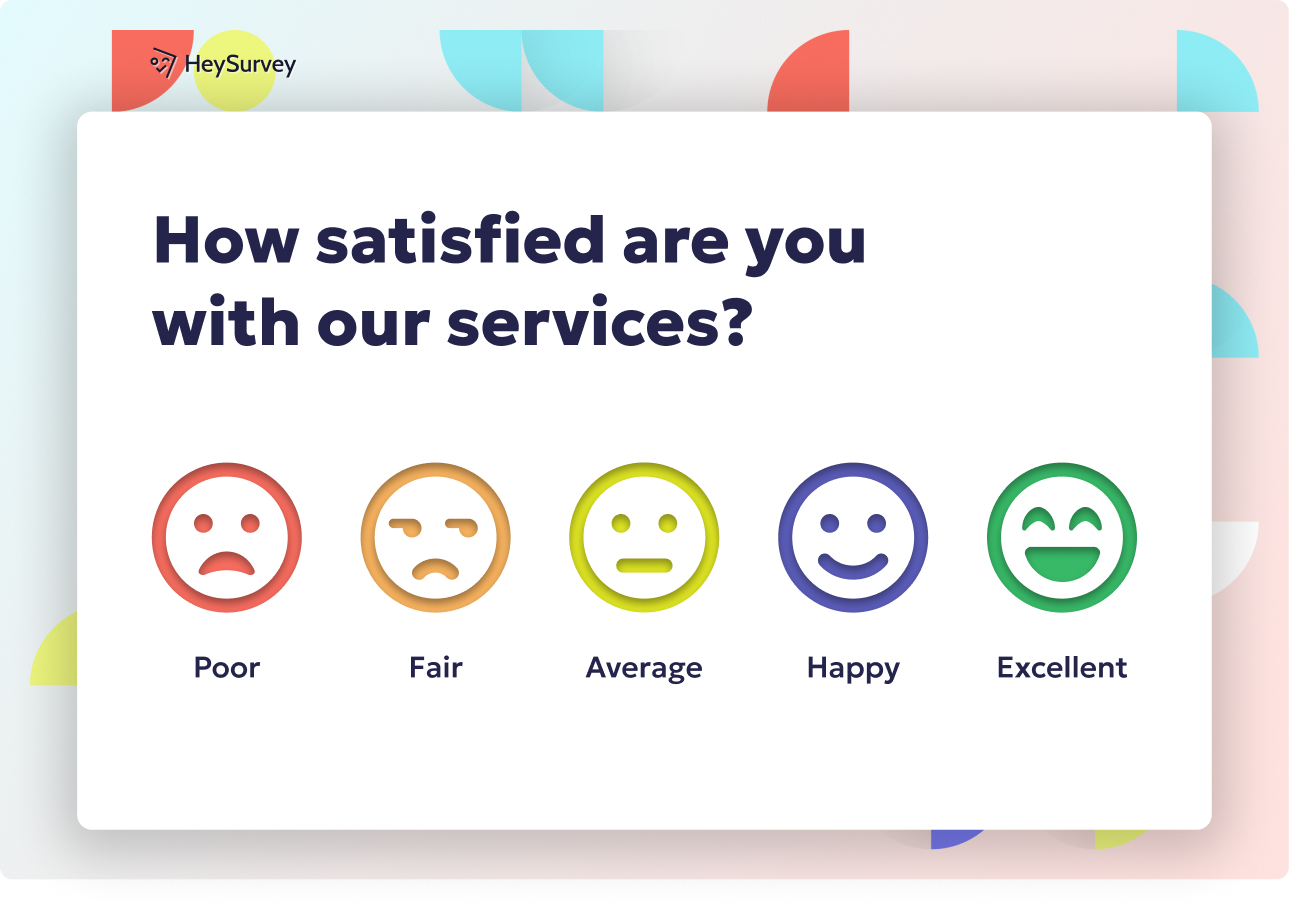31 Opinion Survey Questions: Types, Uses & Best Samples Guide
Discover 25+ expert-crafted opinion survey questions with types, use-cases, and tips to measure attitudes and gather customer opinions effectively.
Opinion survey questions are the secret sauce for businesses, non-profits, educators, and UX teams that want to measure attitudes rather than just count heads or tally bland facts. Whether you’re hungry to gather customer opinions after a product launch, curious about shifting brand perception, or checking student reactions to a lesson, these questions offer powerful insights no spreadsheet can conjure alone. In this article, you’ll discover the six most popular types—each packed with actionable sample questions—making it easy to grab the right tool for your next survey adventure.
Likert-Scale Opinion Surveys
Why & When to Use
For those who want to dig below the surface of “meh” or “wow,” the Likert scale survey is a classic. It transforms fuzzy feelings into quantifiable results, letting you see just how strongly people agree or disagree with a statement. This approach shines when you need to track change over time, such as in employee engagement programs or satisfaction studies where subtle shifts can be telling.
Use these agree-disagree questions when you want respondents to rate the intensity of their feelings. Whether you’re following up post-event or keeping tabs on organizational morale year over year, the famous 5-point scale makes a world of difference. It’s a favorite for longitudinal studies because comparing slices of sentiment is a piece of cake.
Don’t let the format fool you—the Likert scale demands thoughtful question crafting. Choose a balanced Likert design with a clear midpoint and labels at both ends. Odd-numbered options (like 5-point or 7-point) provide a neutral ground, while even-numbered scales quietly nudge folks to pick a side. The trick is keeping statements neutral so you don’t accidentally strong-arm opinions.
5 Sample Likert Questions to Include
- I find the new mobile app easy to navigate.
- The webinar content met my expectations.
- I feel valued as an employee at this company.
- Our customer support resolves my issues promptly.
- The product’s price reflects its value.
Each statement should feature response options ranging from “Strongly disagree” to “Strongly agree,” sitting comfortably on a 5-point scale. Crafting Likert scale survey questions that are clear and impartial invites honesty. Avoid vague or compounded ideas. Keep each item focused, and always define what your midpoint (such as “Neither agree nor disagree”) means—ambiguity is the enemy of good data.
For best results:
- Use consistent wording and direction throughout your survey
- Avoid loaded or emotionally charged terms
- Test your questions with a small group before launch to check clarity
Employing the Likert scale survey skillfully lets you see exactly where opinions tilt. This method balances efficiency with information depth, making it a mainstay in every researcher’s toolkit.
Research indicates that using 5- to 7-point Likert scales enhances reliability and validity compared to scales with fewer points. (ukessays.com)

How to Create Your Opinion Survey with HeySurvey in 3 Easy Steps
Ready to create your very own opinion survey? HeySurvey makes it a breeze—even if you’re new to the game. Follow these simple steps to get your survey up and running in no time!
Step 1: Create a New Survey
- Head over to HeySurvey’s dashboard and click “Create Survey.”
- Choose whether you want to start from an empty sheet or pick a pre-built template that fits your survey type (think Likert scale, rating, or ranking surveys).
- Give your survey a clear internal name to keep everything tidy as you build.
Now you have a fresh survey canvas ready to go—time to add your questions!
Step 2: Add Questions to Your Survey
- Click the “Add Question” button at the top or between existing questions.
- Select a question type that suits your needs: from Choice (single or multiple answers), Scale (Likert, NPS), Text (open-ended), to Ranking, and more.
- Type in your question text and customize options like labels, number of scale points, required fields, or add images if you want to spice it up.
- Arrange your questions by dragging them into your preferred order—or duplicate questions for speedy setup.
- Bonus pro tip: Use branching to guide respondents down different paths based on their answers, so your survey stays relevant and engaging for everyone.
Step 3: Publish Your Survey
- Once your questions are polished, hit the “Preview” button to see your survey exactly how respondents will. Make any last-minute design tweaks with the Designer Sidebar!
- When ready, click “Publish.” You'll get a shareable link you can send out, embed on your website, or distribute via email or social media.
- Just remember—you'll need to create a HeySurvey account if you haven’t already, so you can collect and view your responses later.
Bonus Steps to Make Your Survey Shine
Apply Branding:
Upload your logo and customize colors, fonts, and backgrounds in the Designer Sidebar to make your survey look truly yours. Your brand will get some love every step of the way.
Define Settings:
Tweak your survey’s availability by setting start/end dates or a max response limit. Want respondents to see results or redirect them to a thank-you page? All of that lives in the Settings Panel.
Skip Into Branches:
Use branching logic to create personalized survey journeys. Respondents only see questions that matter to them, improving completion rates and data quality.
When you’re ready to get started, hit the button below to open a ready-to-go template tailored for your favorite opinion survey type. Say hello to smarter feedback with HeySurvey!
Semantic Differential Opinion Surveys
Why & When to Use
For a 360-degree look at how people feel about your brand or product personality, turn to the semantic differential. This method asks respondents to rate a concept between pairs of bipolar adjectives, drawing out nuance that traditional agree/disagree can’t touch. It’s nimble for studies on branding, user experience (UI/UX), packaging, and advertising impression—whenever attitude and impression matter as much as hard numbers.
If you’re probing brand perception or want to see whether an app feels “modern” or “dated,” this format delivers clarity with a touch of fun. Bi-polar adjective pairs spark reflection and help teams recognize where small tweaks might shift big opinions. The visual spread—from “confusing” to “intuitive” or “cheap” to “premium”—lets every shade in the rainbow of opinion shine through.
Best practice is setting up a symmetrical scale, such as the widely respected 7-point semantic differential grid, which allows for subtler gradations. Always keep the direction of adjective pairs consistent (e.g., positive on the right, negative on the left), helping respondents glide through the survey without a mental tripwire.
5 Sample Semantic Differential Questions
- Our website feels: Innovative _ _ _ _ _ Traditional
- Customer service was: Unhelpful _ _ _ _ _ Supportive
- The packaging looks: Cheap _ _ _ _ _ Premium
- Navigation is: Confusing _ _ _ _ _ Intuitive
- The brand personality seems: Formal _ _ _ _ _ Casual
Respondents mark the position on the scale that most matches their impression. These bi-polar adjective pairs illuminate how subtle shifts—such as design, copy, and customer touchpoints—impact overall perception. It’s a goldmine for brand managers craving specific feedback on what feels “off.”
Tips for excellence:
- Use adjectives that are truly opposite
- Keep language familiar and relevant to your audience
- Avoid ambiguous or overlapping pairs
A well-executed brand perception survey using semantic differential questions peels back the layers of customer sentiment like an onion—minus the tears. You’ll see where your brand sparkles and where it needs a polish.
Semantic differential scales effectively capture nuanced consumer perceptions of brands by measuring attitudes across evaluation, potency, and activity dimensions. (simplypsychology.org)
Numeric / Star Rating Opinion Surveys
Why & When to Use
Sometimes, you just need a quick temperature check. Enter the rating scale survey, using instantly recognizable 1-to-5, 1-to-7, or even 0-to-10 scales—or the ever-popular star rating system. These questions excel post-transaction, after events, or for fast mobile feedback, when you want to gather customer opinions at lightning speed.
A single number or row of stars works brilliantly for quick polls, NPS (Net Promoter Score), or customer satisfaction (CSAT) collection. One tap and you’re done—the dream for busy respondents who don’t have time for Shakespearean prose. Rating scale survey questions are ideal for benchmarking performance, comparing team members, or simply guiding customers to the next step in a purchase, thanks to their clarity and brevity.
Comparison with “Likert vs. Rating” is frequent: Likert scales reveal the intensity of agreement with statements, while rating scales measure overall experience or likelihood. Both have a place in the survey hall of fame, but the rating scale is your all-star for fast feedback and broad overviews.
5 Sample Rating Questions
- Rate your overall satisfaction with today’s chat support (1–5 stars).
- How likely are you to recommend our café to a friend? (0–10).
- Please rate the clarity of the tutorial video (1–5 stars).
- Score the onboarding experience (0–10).
- How motivating did you find the keynote speaker? (1–7).
Each question should clearly state what the endpoints mean (“0 = Not at all likely, 10 = Extremely likely”). The star rating question format is delightful for mobile users, and numeric scoring gives analysts the power to make rapid, apples-to-apples comparisons.
Best practices for these questions:
- Always define the meaning of each scale point
- Keep the visual display intuitive—rows of stars work wonders
- Avoid cramming too many ratings into one survey, or risk overwhelming your audience
With rating scale survey questions, collecting trend data is fast, comparison is a breeze, and action items pop into view, ready for your team to tackle.
Ranking Opinion Surveys
Why & When to Use
Sometimes knowing people’s favorite isn’t enough—you want to see their whole top-five playlist. That’s where the ranking question shines, inviting respondents to sort, prioritize, or literally drag-and-drop their preferred options into order. It’s a smart move for product feature prioritization, roadmap planning, or understanding which gym benefits or brand perks truly rise to the top.
Unlike numeric scales that measure absolute satisfaction, ranking questions provide insight into relative preference—what beats what when push comes to shove. Rather than “How valuable is this?” you're asking, “Which is most valuable, and which do you care about least?” This helps businesses prioritize development or marketing resources, confident in what actually matters to the crowd.
Keep surveys user-friendly by limiting ranking choices—no one likes sorting a laundry list of 15 items. Stick with fewer than seven to prevent survey fatigue and confusion. Randomize the starting order to control for order bias, ensuring that you surface real preferences, not just the result of top-of-list inertia.
5 Sample Ranking Questions
- Rank these features in order of importance: Battery life, Camera quality, Screen size, Price.
- Order the following benefits you value most in a gym membership.
- Prioritize marketing channels for next quarter’s budget.
- Arrange these policy initiatives from most to least urgent.
- Rank the meal options you’d most like added to the menu.
The prioritize options format provides clarity for decision-makers who need to allocate precious resources. Use drag-and-drop surveys online for a more playful, interactive experience, but always include clear instructions.
For flawless ranking questions:
- Present options in a random order whenever possible
- Limit the number of items per question to keep things manageable
- Clarify whether respondents can assign equal ranks or must create a strict order
Well-crafted ranking questions transform a muddle of opinions into priority actions, leading teams out of analysis paralysis.
Ranking questions, while providing clear prioritization of preferences, can be cognitively demanding for respondents, especially with longer lists, potentially leading to survey fatigue and less reliable data. (measuringu.com)
Yes/No (Binary) Opinion Surveys
Why & When to Use
Craving simplicity? The yes or no survey question emerges as the hero for split-second decisions, entry-point screening, or clear opt-in/opt-out scenarios. This is the workhorse of funnels, pop-up polls, and eligibility checks, and it’s impossible to misunderstand.
A binary opinion question is perfect when you need to clear the confusion—are people onboard or off the ship? It’s ideal for determining immediate policy support, quickly segmenting leads, or testing reactions to price points or features before investing further effort. Marketers also rely on this yes/no format for A/B testing and micro-surveys, where seconds count.
Power up your binary questions by offering an open-ended follow-up—a quick “Why?” box invites richer insight beyond the simple yes or no. This tiny nudge turns a blunt instrument into a scalpel for uncovering barriers, motivations, or lingering doubts.
5 Sample Yes/No Questions
- Do you support extending store hours to 10 p.m.?
- Would you purchase this product at a $49 price point?
- Do you agree with the new remote-work policy?
- Should we continue using printed receipts?
- Will you attend next month’s webinar?
Each yes or no survey question is immediate, non-negotiable, and easy to tally at scale. But by layering on a binary with open-ended follow-up field (“Tell us why you answered this way”), you capture context that makes the next decision crystal clear.
Smart strategies for binary questions:
- Use neutral language; don’t frame the question to favor yes or no
- Only ask binary questions when more options truly aren’t needed
- Capture follow-up feedback when actionable context is valuable
For fast answers and unambiguous analytics, it’s hard to beat the precision of a binary opinion question.
Open-Ended Opinion Surveys
Why & When to Use
When numbers just aren’t enough and you’re after qualitative feedback, open-ended questions give respondents the floor. This is where you collect story-rich, verbatim responses full of real emotions, creative ideas, and surprises that can steer your strategy in ways you never imagined.
Open-ended survey questions shine in exploratory research, after scaled ratings, or when you want genuine product input. They’re gold for post-mortems, new feature brainstorming, or when you sense there’s something crucial your prefab options might miss. This is your window to the soul of the respondent.
It isn’t all roses—verbatim responses take more effort to sift and analyze. But with the help of modern text analysis tools, it’s easier than ever to analyze open-ended survey data for top themes, customer language, and emotional tone. With this rich narrative data in hand, businesses and organizations can move from “what” to “why.”
5 Sample Open-Ended Questions
- What is the main reason you chose our service over competitors?
- Describe one improvement that would make the product indispensable.
- How did today’s event make you feel?
- What barriers prevent you from using our app more often?
- In your own words, what does our brand stand for?
These open-ended survey questions invite discovery—sometimes humorous, sometimes blunt, but always insightful. Use them when innovation is your goal, or when you sense that respondents know something the multiple-choice questions have missed.
For open-ended success:
- Place open-ended items after scaled questions, giving context for more thoughtful responses
- Limit the number per survey to avoid scaring people away with a wall of empty boxes
- Use text analytic tools to uncover trends without drowning in data
A well-timed open-ended survey question uncovers the gems that make products irresistible and brands unforgettable.
Best Practices: Dos & Don’ts for Crafting Opinion Survey Questions
Mastering opinion survey questions means dodging classic pitfalls and embracing what works. Here’s a fast rundown of top dos and don’ts so you can dazzle respondents and collect insights you trust.
Dos:
- Aim for neutral question wording so everyone can answer freely.
- Pilot test your scales to ensure participants understand every label.
- Always randomize the order of response items to reduce response bias.
- Limit total survey length to fend off survey fatigue and keep answers fresh.
- Use consistent and clear instructions, especially when questions change types.
- Include a “not applicable” or neutral midpoint where appropriate for question reliability.
- Follow every simple answer (especially yes/no) with a brief “Why?” for depth.
- Rely on user-friendly design—mobile compatibility is a must.
Don’ts:
- Never ask double-barreled questions like “Was the service fast and friendly?”
- Avoid leading questions that steer respondents to a particular answer.
- Don’t let individual questions drag on; brevity is the secret sauce.
- Skip jargon, acronyms, or business-speak—clarity rules.
- Don’t stack multiple open-ended questions at the end; pace them for energy.
- Avoid vague scales like “1 to 10” without defining endpoints.
- Don’t ignore cultural context—phrasing matters globally.
- Say goodbye to unnecessary compulsory responses that irritate users.
For greater visibility, consider including a FAQ or schema markup with your survey, making it even easier for the world to find and use your questions. Build your survey with empathy, precision, and a hint of playfulness, and respondents (and your analytics) will thank you.
Conclusion & Next Steps
Choosing the right opinion survey question unlocks richer, smarter insights—whatever your goal. Remember to align question types with the story you want your data to tell and your analysis plan. Mix and match the formats above for more complete, actionable results. Whenever you’re ready, grab our template and build your own survey—no guessing required. Ready to create opinion survey now?
Related Question Design Surveys

29 Quantitative Survey Research Questions Example for Success
Explore 25+ quantitative survey research questions example with clear explanations and tips for c...

32 Good Survey Question to Boost Your Data Quality
Discover how to craft good survey questions with 30 sample questions across 8 types for better da...

31 Survey Question Mistakes You Need to Avoid Today
Discover 25 common survey questions mistakes with real examples and expert tips to craft clear, u...

